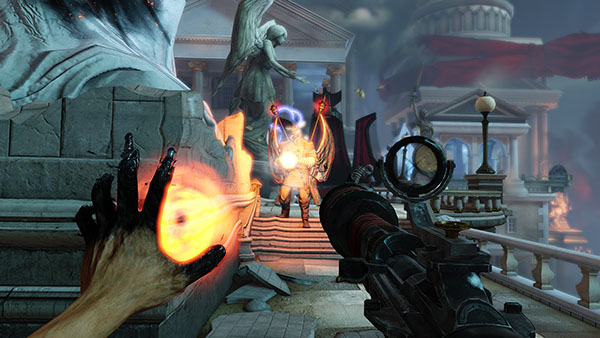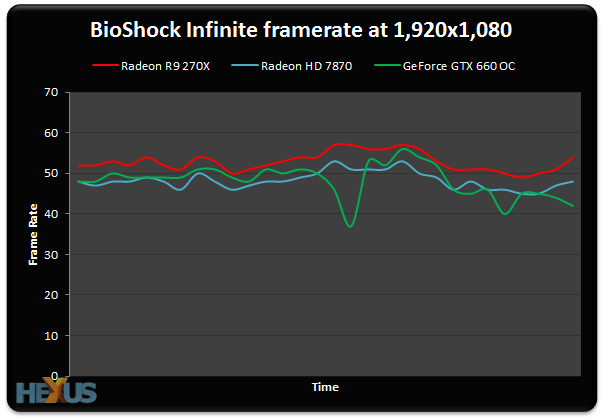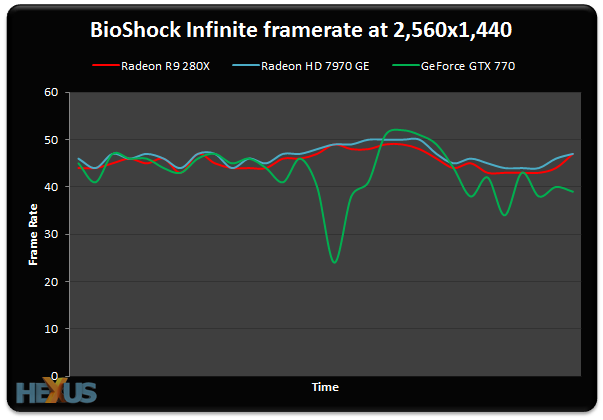BioShock Infinite
 |
Making a really good case for game of the year already, BioShock is fantastically playable and looks great on the PC. We benchmark a 30-second section near the start.

R9 280X falls in just behind the HD 7970 GE, as expected, and matches the performance of the $399 GeForce GTX 770.
R9 270X produces very acceptable framerates at 1080p but struggles when we raise the resolution to 2,560x1,440. The cheapest card in the line-up is swamped by the ultra-quality settings yet still manages to average over 30fps at 1080p.
We can take a closer look at per-second performance by comparing the two Radeon R9 cards against similar GPUs readily available today. We're looking at the R9 270X in relation to the Radeon HD 7870 and GeForce GTX 660 OC, and it makes sense to examine perf at the 1080p resolution that AMD has ostensibly designed this card for.
Per-second examination - R9 270X - 1,920x1,080

BioShock Infinite performance is consistently smooth on the Radeons. The extra frequency headroom of the R9 270X makes it around 10 per cent faster than the HD 7870. GeForce GTX 660 OC's performance generally falls between the two, albeit with a downward bump in the middle.
The $299 R9 280X is a meatier GPU that, AMD says, can run at a 2,560x1,440 resolution with maximum image-quality settings. We've therefore compared it to the Radeon HD 7970 GE ($399) and GeForce GTX 770 ($399)
Per-second examination - R9 280X - 2,560x1,440

The R9 280X does indeed produce GE-like performance - remember that the only real difference between the two is a slightly slower peak core speed for the new card. GeForce GTX 770 also exhibits a drop-off in the middle of our benchmark run.
Conclusion? AMD's Radeon R9 series redefines performance at lower price points.









